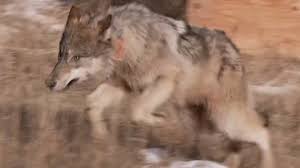Colorado’s recent reintroduction of gray wolves into the wild has ignited both hope and controversy. While conservationists celebrate the return of this keystone species to its historic habitat, ranchers voice concerns over potential conflicts with their livelihoods. The recent depredation incident, where a calf fell victim to a wolf attack, underscores the complex challenges at the intersection of wildlife management and ranching in the state. This article explores the intricacies of Colorado’s gray wolf reintroduction program, delving into the perspectives of various stakeholders and advocating for a balanced approach to coexistence.
The Case for Reintroduction: Colorado’s decision to reintroduce gray wolves stems from a desire to restore ecological balance. Once native to the region, these apex predators play a crucial role in regulating prey populations, thereby enhancing ecosystem health. Proponents of the reintroduction emphasize the importance of preserving biodiversity and protecting natural habitats. They argue that wolves contribute to ecosystem resilience, promoting species diversity and fostering dynamic landscapes.
Ranchers’ Concerns: However, the reintroduction of wolves raises valid concerns among ranchers, whose livelihoods depend on livestock. The recent depredation incident highlights the tangible impact of wolf predation on ranching operations. For ranchers, each loss represents not only economic hardship but also the emotional toll of witnessing their animals fall prey to predators. Moreover, ranchers argue that the presence of wolves poses a threat not only to livestock but also to human safety, particularly in rural communities.
Conflicts and Compromises: Navigating the tensions between wildlife conservation and ranching interests requires careful consideration and collaboration. One proposed solution involves implementing proactive measures to mitigate conflicts, such as employing non-lethal deterrents and enhancing livestock protection strategies. Additionally, establishing compensation programs for ranchers affected by wolf depredation can help alleviate economic losses and foster goodwill between stakeholders.
Community Engagement and Education: Central to the success of Colorado’s wolf reintroduction program is robust community engagement and education initiatives. By fostering dialogue between conservationists, ranchers, policymakers, and local communities, stakeholders can collectively develop solutions that prioritize both wildlife conservation and ranching sustainability. Public outreach efforts should aim to dispel misconceptions about wolves, promote coexistence strategies, and empower individuals to actively participate in conservation efforts.
Policy Implications: As Colorado grapples with the complexities of wolf reintroduction, policymakers must enact evidence-based policies that balance ecological preservation with socioeconomic considerations. This entails conducting comprehensive research on wolf behavior, monitoring population dynamics, and adapting management strategies accordingly. Moreover, policymakers should incorporate stakeholder input into decision-making processes, ensuring that the needs of both wildlife and rural communities are adequately addressed.
Colorado’s gray wolf reintroduction program represents a pivotal moment in the state’s conservation history, offering the opportunity to restore ecological integrity while confronting the challenges of coexistence. By fostering collaboration, implementing proactive measures, and prioritizing community engagement, Colorado can navigate the gray area between wildlife conservation and ranching interests. Ultimately, achieving harmony between humans and wolves requires a commitment to empathy, dialogue, and adaptive management practices.
